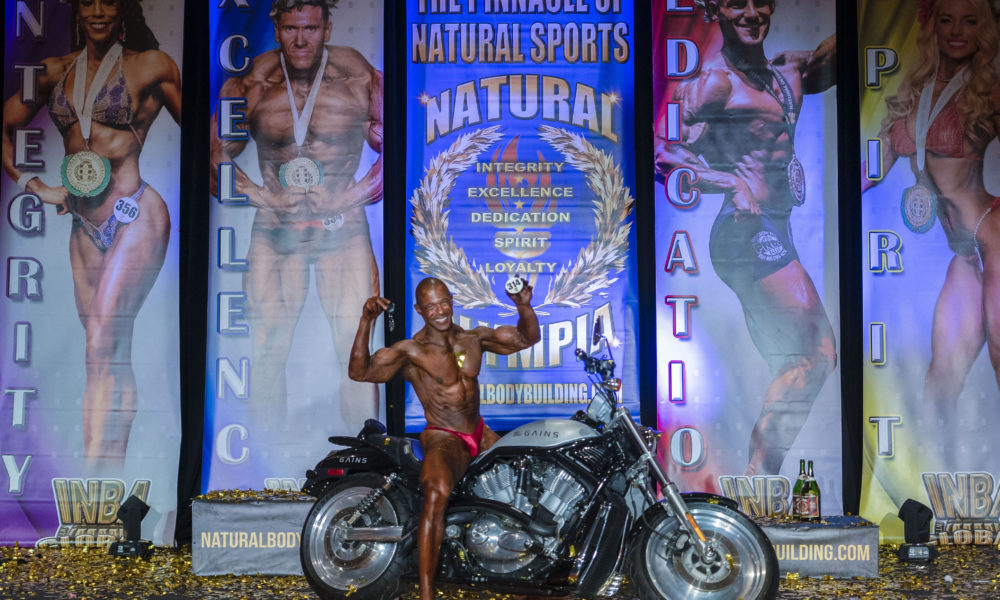

The sport of bodybuilding is more than lifting weights, proper nutrition, and cardio: it’s also learning how to skillfully display your God given physique to its fullest potential on a competitive stage. Mastering the skill of posing can increase a competitor’s chances of receiving higher placements from the judging panel. A well-choreographed posing routine will generate praise and awe from the audience and leave an ever-lasting impression for bodybuilding fans.
As a teenager, I marveled at the legendary champions of that era, and was captivated by Arnold’s ‘twisting back’ pose, Sergio Oliva’s “victory” pose, and Frank Zane’s signature “vacuum” pose.
When I began my bodybuilding journey in 1992, my favorite physique artists were the ones whose poses not only complimented their incredible physiques but whose stage performances stirred me emotionally.
My favorite posing routine was Lee Labrada’s 1991 Mr. Olympia “matador” performance, where he perfectly executed each pose with the precision of a bullfighter. Great competitors like Shawn Ray, Flex Wheeler, Bob Paris, and Francis Benfatto also choreographed classic posing routines throughout their careers. Vince Taylor’s “Robocop” routine at the 1992 Mr. Olympia was the first time witnessing a truly entertaining routine. The originality of adding sound effects, tempo change, and audience interaction made me realize the value that a great posing routine can deliver if you put time and effort into educating yourself in the art of posing. Melvin Anthony and King Kamali also wowed the audiences with their pop-locking, gravity-defying routines, while today’s top crowd pleasures like Kai Greene and Terrence Ruffin have carried on that tradition of elite posing entertainers.
History of posing:
Bodybuilding originally started in Europe in the late 1800s and drew its inspiration from the ancient Greeks athletes as well as theatrical circus’, gymnasts, and strongmen.
The first famous bodybuilder, Germany’s Eugen Sandow (born Friedrich Müller in 1867), is regarded as the Father of modern bodybuilding. Sandow was known for his aesthetic and muscular physique, which enabled him to promote himself as the first real bodybuilder and promoter of bodybuilding. In 1898, Sandow published the first bodybuilding magazine, Physical Culture. He also developed some of the first bodybuilding equipment, appeared in many magazines and postcards, and traveled abroad to perform posing routines to sold-out audiences. Sandow also sponsored the first official bodybuilding contest on Saturday, September 14, 1901, at England’s Royal Albert Hall, with a packed audience witnessing wrestling, gymnastics, and fencing before the main event, bodybuilding.
The first American physique contest was sponsored and promoted by Bernarr Macfadden in 1903 at New York’s Madison Square Garden. Our current bodybuilding poses and show format were developed at MacFadden’s annual events.
The 1930s began the beginning of the ‘Golden age of bodybuilding”. Aspiring bodybuilders spent hours in the gym focusing on sculpting the perfect stage physique. These gyms would cater to bodybuilding training and it became the norm to see athletes posing in front of mirrors to admire their hard work. Currently, bodybuilding has become mainstream and has reached global popularity. Millions of fans travel the world to see their favorite competitors perform and compete. With social media, magazines like Ironman Magazine, and movie and film coverage from Generation Iron, the future of bodybuilding continues to grow.
Competition Posing Rounds
Traditionally, the Men’s bodybuilding division consists of 2-3 rounds of posing. For example, the International/Professional Natural Bodybuilding Association (INBA/PNBA) has a total of 2 rounds during prejudging: the ‘Symmetry’ round and a ‘Muscularity’ round, and the ‘Individual’ posing round in the finals.
Round 1
In the symmetry round, competitors will make quarter turns to the right when prompted by the Head Judge. Competitors are judged on the overall balance and shape of their physique.
- Standing Relaxed – Front: In my opinion, this is the most important pose during the prejudging since the judges will see you in this pose the most. This pose will be the first impression the judges will get when you are standing in a line-up of other competitors. To execute this pose, focus on keeping your quads flexed and your knees slightly bent. Depending on your body type, crunch down and flex your abs, or lift your chest while drawing your abs in. Flare out your lats and let your arms hang over them while naturally tightening your arms. The goal is to present a proportional front relaxed pose with wide shoulders and lats, a small tapered waist, and sweeping quadriceps.
- Standing Relaxed – Both Sides: Flex your triceps on the arm facing the judges, ensuring your obliques are visible and are flexed. Squeeze your opposite arm against your chest to bring out the definition in your pectorals. Press the leg closer to the judges against your back leg, enhancing the size of the hamstrings facing the judges. Flex your calves, glutes, and quads.
- Standing Relaxed – Rear: Flare your lats as wide while keeping your rear delts and arms flexed but avoid exaggerating the height of your elbows. Lean back a little to display the definition of your lower back. Avoid squeezing your shoulder blades together. Keep the calves, glutes, and hamstrings tight by shifting your hips forward and raising up on your toes slightly.
Round 2
The Muscularity round is where the judges look for the best combination of muscle mass, muscular condition & separation between the muscle groups (otherwise known as ‘tie-ins’). Competitors will perform 8 mandatory poses called out by the Head Judge.
Mandatory poses
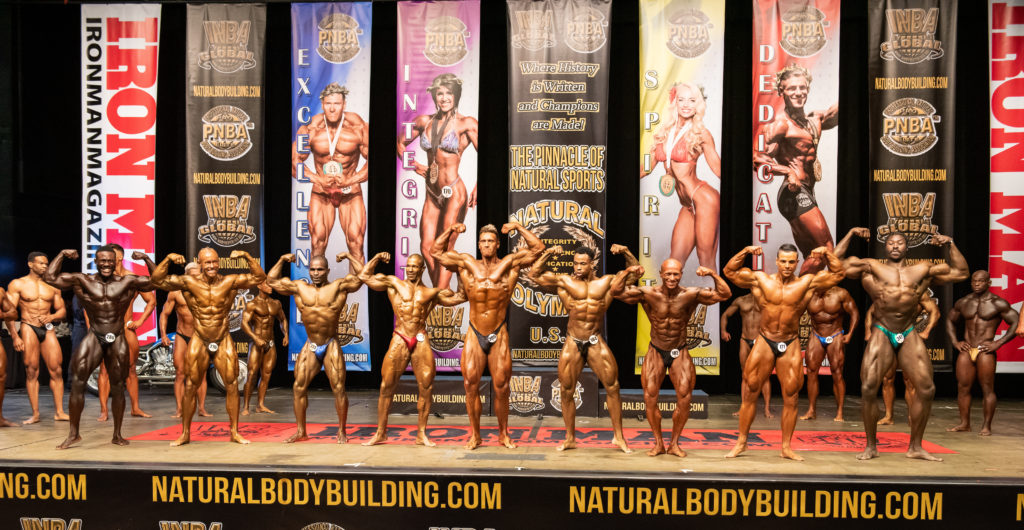
- Front Double Biceps – Arguably the most popular bodybuilding pose, whether you are a competitor or a person that is randomly asked to flex their muscles. This is the first front pose you will do in most standard bodybuilding competitions. The front double biceps pose displays your arm size and muscularity, with an emphasis on the biceps shape, size, and peak. Like the front relax pose, the goal is to display your X-frame, which equates to the competitor having broad shoulders, wide lats tapering downward to a small waist, and sweeping quads. To maximize this pose, stand with your legs shoulder-width apart and raise your arms while keeping your elbows high, lats flared out and flexing the biceps. Depending on your abdominal development and conditioning, you can flex your abs by crunching down on your abdominal wall, or sucking in your stomach if you do not possess thick abdominal muscles or top stage conditioning. If you can perform a vacuum pose (discussed later in this article), this will allow you to accentuate your V-taper and muscle control that is rarely seen in the bodybuilding division.
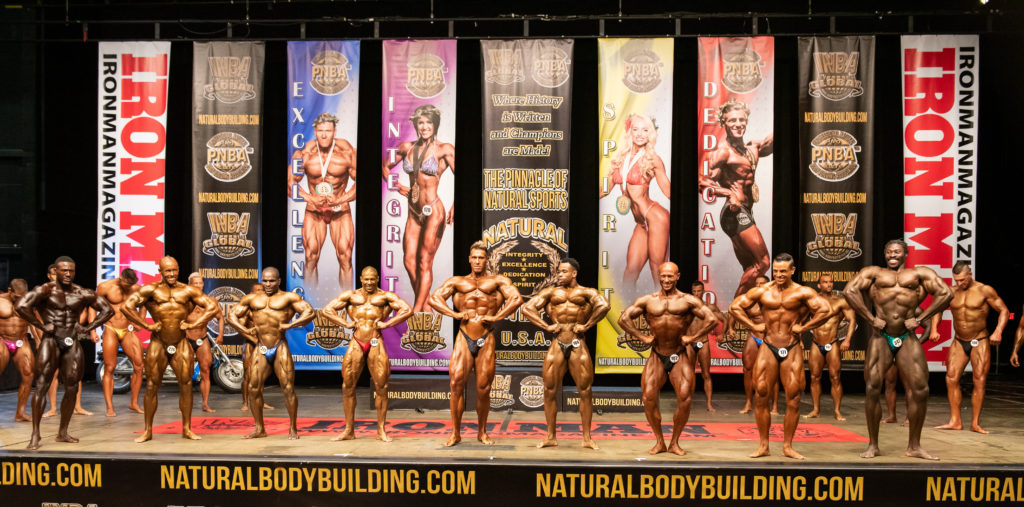
- Front Lat Spread – The front lat spread allows you to highlight your lat width from the front, chest thickness, shoulder width, front arm and forearm size, quadriceps mass and separation, and calf development from the front. Depending on your leg development and quadriceps sweep, you can keep your feet together or shoulder-width apart while pointing your toes out to a 30-45-degree angle while flexing your thighs. At the same time, place your thumbs behind your waist like a hook and bring your thumbs forward while spreading your lats. Finally, and like the double biceps pose, you can flex your abs or suck in your stomach and perform a vacuum, while keeping your chest up and back slightly arched. Many competitors make the mistake of lifting their shoulders up as well, which will prevent the lats from spreading out to its full potential.
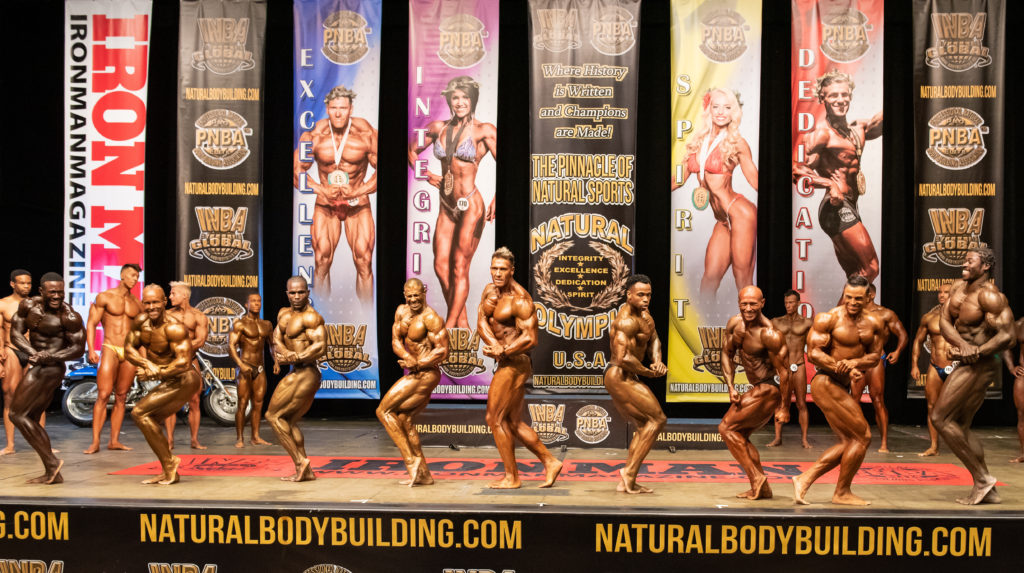
- Side Chest – The side chest pose displays your chest size and thickness from either side.
Depending on the show you compete in, you may have the option of choosing to pose from your right or from your left, depending on which side you feel is more dominant, or you will be judged on both sides, with the right side judged first. To execute the right-side chest pose, plant the right foot next to the inset of your left foot, with both knees slightly bent, and bring both legs together, squeezing your hamstring and quads. A trick most experienced bodybuilders use is to use your back leg (in this case for right side chest, your right leg) to push the hamstring of your front leg (left leg) out to give the illusion of thicker, low hanging hamstrings. Place your right hand over your left wrist and flex the bicep in a contracted 90-degree angle. Inflate the chest with air and contract the muscle to display striations.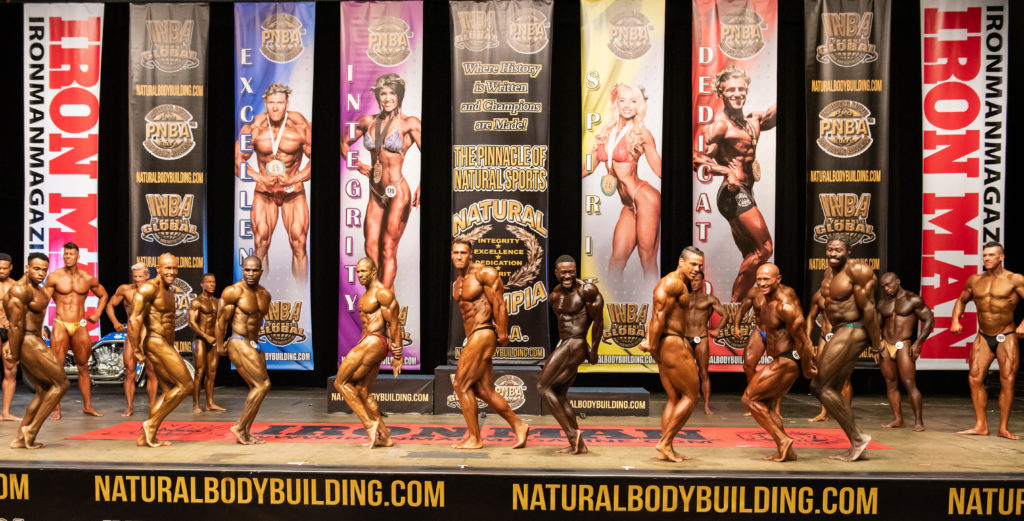
- Side Triceps – The side triceps pose displays your triceps development, especially your lateral triceps head. As with the right-side chest pose, plant the right foot next to the inset of your left foot, with both knees slightly bent, and bring both legs together, squeezing the hamstrings and quads. Bring your forward arm (left arm for right side triceps) backward and squeeze your triceps into your lats and flex your triceps. Rotate your shoulder back, and your torso slightly from side to side to allow all the judges to get a good view of your side triceps pose. Unlike the side chest pose, bodybuilding competitor’s waists are more exposed, meaning you will have to control your abs and obliques by contracting them while executing a side triceps pose.
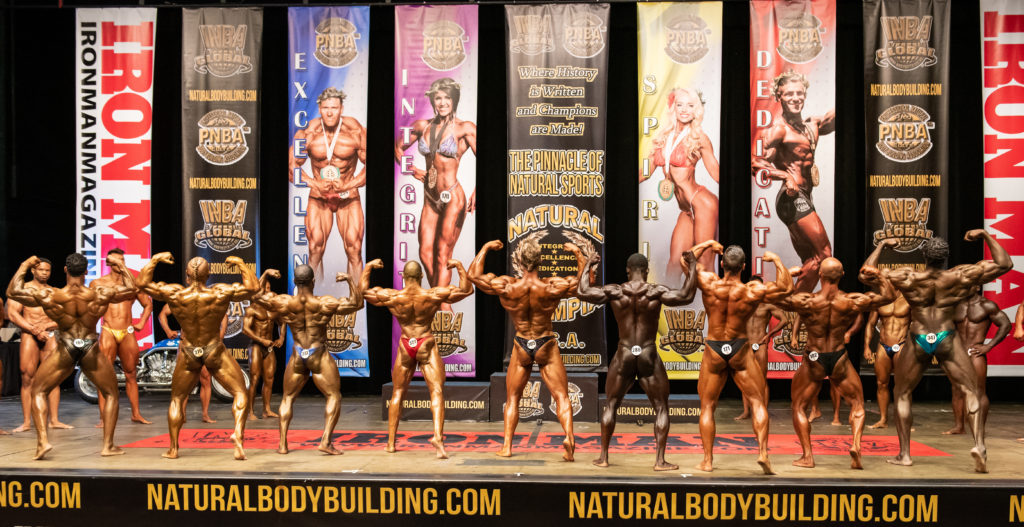
- Rear Double Biceps – It has been said that most bodybuilding shows are won from the back.
This theory is due to most gym goers and novice bodybuilders emphasizing the front of their physiques since it’s most visible in the mirror or in photos. Since the back is made up of many muscles, this pose has the potential to display back detail and thickness in all areas of the back, including your trapezius, infraspinatus, teres major, latissimus dorsi, and erector spinae. The rear double biceps pose shows off your arm size and separation from the rear, particularly your biceps mass and peak, as well as the shoulders, hamstrings, and calf development. Performing the back-double biceps pose is like the front double biceps, as it requires flexing the biceps with their arms out to the side while keeping the back open so that the lats can flare out. The competitor should not pinch their shoulder blades together, as they will lose back width. Competitors should lean their torso back slightly toward the judges and always keep the elbows slightly higher than the shoulders to accentuate a V- taper. Additionally, one foot is placed backward on the ball of the foot to contract a calf. Hamstrings and glutes should also be contracted to display separation and definition within those muscle groups.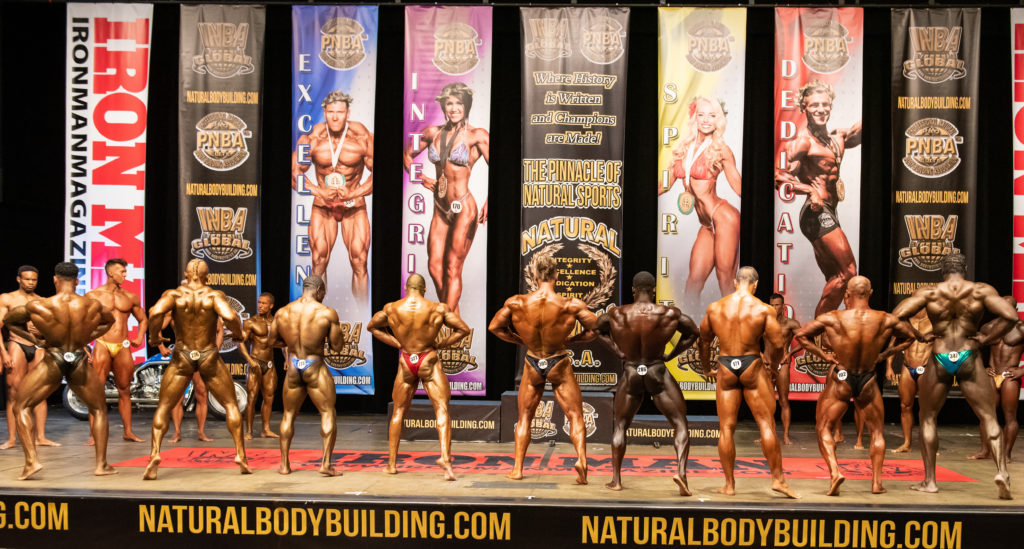
- Rear Lat Spread – The rear lat spread has the competitor perform the front lat spread, but with his or her back facing the judges. Judges are looking at back width and thickness, as well as overall torso shape and taper. To execute the rear lat spread, start by extending one leg back and squeezing your glutes and hamstrings by shifting your hips forward and driving the foot of the extended leg into the ground. Bring back your elbows slowly at first to show off the lower back “Christmas tree” and striations in the lats, then put your fists into your sides. Start spreading your lats by shifting your elbows forward and slightly upward, while keeping your chest up and leaning slightly back toward the judges.
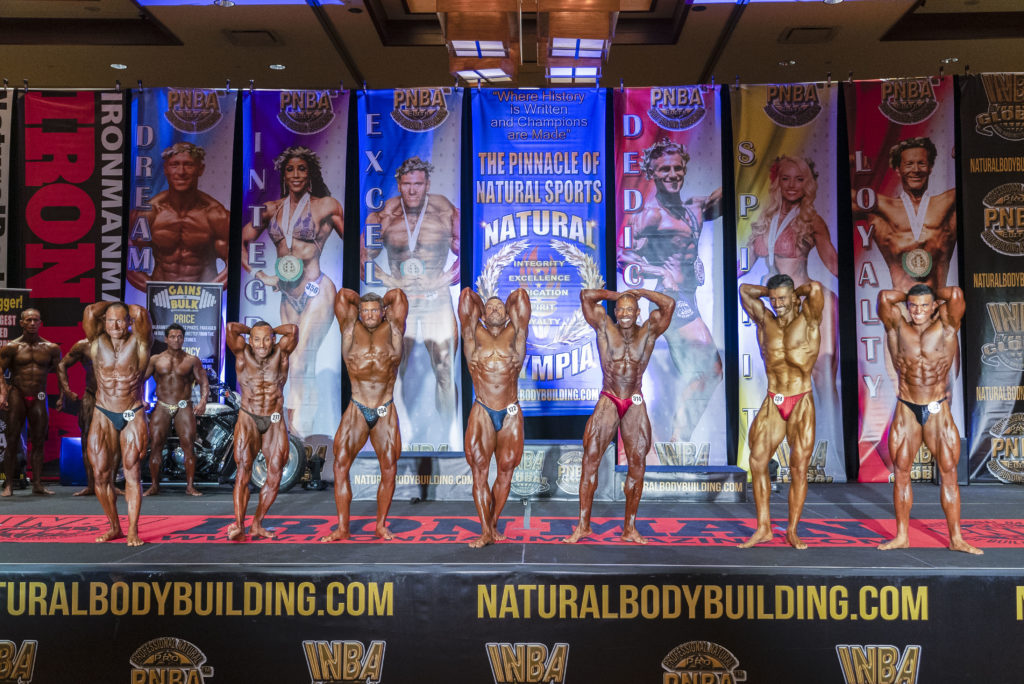
- Abdominal and Thigh – The abdominal and thigh pose displays the development and definition of your abdominal wall, external intercostals, serratus anterior, and quadriceps muscles. Competitors often do several variations of this pose. Traditionally, bodybuilders placing one leg out slightly in front (your favorite quadricep) while flexing the quadriceps. Next, place both arms behind the head and neck while keeping the shoulders downward. Then, flare the lats and exhale to fully crunch down on the abs while contracting the front abs, intercostals, serratus anterior, and obliques. Competitors can also place one hand over their head and then flex their abs from each side, or only a single side to display their oblique and intercostal conditioning.
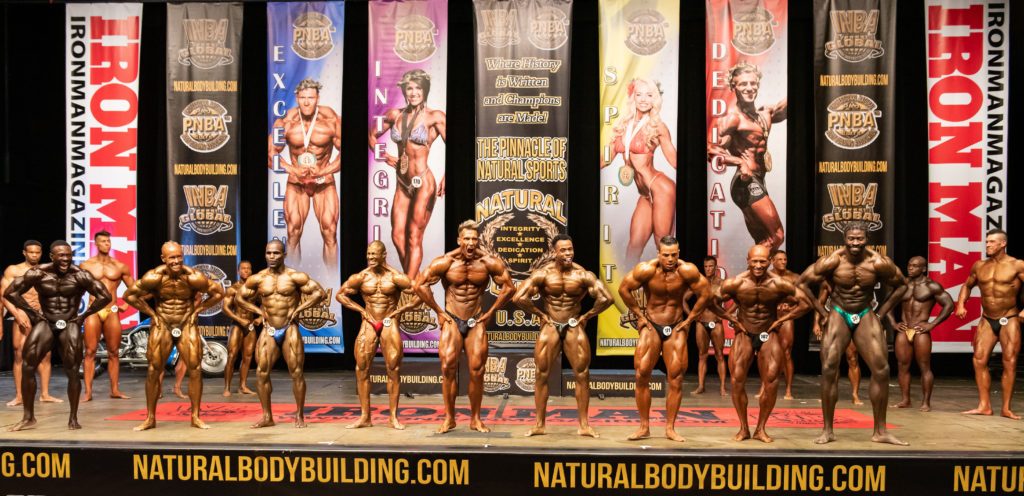
- Most Muscular – The most muscular is the final of the eight mandatory poses. This is the most powerful pose in bodybuilding: hence the name “most muscular pose”, as this displays overall muscle development from the front to include the trapezius, shoulders, chest, arms, forearms, abs, quadriceps, and calves. You can do the crab version of the most muscular by bringing your arms and hands together across your abdomen. Flex the quadriceps and then bring both arms up, out, and in front of their body as if they are hugging a tree. The variations to this pose include the hands on the hip’s version, or hands held together in front of them while keeping the traps in a neutral position. You can do the crab variation of the most muscular by bringing your arms and hands together across your abdomen.
Done in Classic Physique Only
Vacuum Pose – The vacuum pose requires the competitor to expand their rib cage while removing the air from their lungs and using the ab muscles to suck inward as much as possible. When done correctly, the abdominal wall will appear hollow and drawn inward below the rib cage. This was the signature pose of legendary bodybuilder Frank Zane and allowed him to display a V-taper and muscle control that propelled him to victory over competitors that had more mass than him. The Classic Physique division is the only division that requires the vacuum pose so that it could separate itself from the Men’s bodybuilding division by maintaining the classic lines from the Golden era of bodybuilding.
Pre-judging preparation
Preparation for pre-judging should take place early in your competition prep. Pre-judging can be more taxing on your body than an actual full body workout in the gym due to constant tension on every muscle on your body, including muscles you may not have trained as thoroughly in the gym.
Imagine having an amazing competition prep with regards to your training and diet, however, when you step on stage you are unable to display your hard work to the judges. If you are not prepared to execute each pose for the judges over an extended period due to lack of posing practice and preparation, the judges will notice, and so will the fans in the audience. The goal is to own the stage and your stage presence will be determined by how much time and effort you put into your posing.
To prepare for prejudging, give yourself at least 10-12 weeks (preferably longer) of posing preparation where you can put yourself through a few rounds of posing each day. If possible, find a posing coach, bodybuilding judge, fellow competitor, or even workout partner who can call out each of the quarter turns and mandatory poses for you. This person should make you hold the poses longer than you normally would on stage, working up to holding each pose for 30 seconds. This will build stage presence and endurance, and can add extra muscular detail to your physique!
If you can’t find someone to assist you, find a bodybuilding competition on YouTube and follow along with the video’s pre-judging while you pose. If you are competing at a local show, find the same show from the previous year so that you know what to expect when you compete. Imagine yourself onstage against the competitors in the YouTube video and see how you would fare! Finally, look in the mirror and video yourself to make sure you are posing correctly and that you can see each body part flexed. For example, doing a side triceps pose does not mean you only want to see your triceps flexed. You must flex everything that the judges can see including your triceps, shoulders, chest, abs, legs, and the best muscle you have: your smile.
Creating a Posing Routine
Unlike pre-judging, where the head judge instructs the competitors on which poses to execute, the “individual” or “free posing” round is where you can be creative and choose your best poses to the music of your choice for a maximum of 60 seconds for amateurs, and 90 seconds for professionals.
Your posing routine should be entertaining, but also show your personality. First impressions are important, so start with your strongest poses, with music that gets the audience’s attention. Choose a song that’s meaningful to you, and make sure that it fits your body type and the theme of your routine. For example, if you are a heavyweight bodybuilder, posing to a Taylor Swift love song might not be the best choice of music for your physique.
Consider using a posing coach/choreographer when creating your posing routine. Being open to suggestions and advice from coaches and posing experts in the early stages of your bodybuilding career on how to best present your physique can give you a great foundation early on. If you choose to create your individual posing routine by yourself, choose 10 to 15 poses that best show off your body. Practice your posing routine exactly as you intend to perform at least a month before your competition so that it will be memorized by the time you actually hit the stage.
I like to choose songs from action movie soundtracks that contain lots of high and low tempo, and dynamic scenes to create different moods before ending in a climactic finish. Once I decide on the song, I visualize which poses will best fit the mood of the song. I write down each pose while listening to my music repeatedly. I do this to ensure that I find the right pose and transition to the next pose to match the beat and mood of the song. It’s a good idea to arrange your poses in a way that will make it easy to smoothly transition from one to the next. The goal is to make your posing routine look as artistic and effortless as possible, not stiff or robotic.
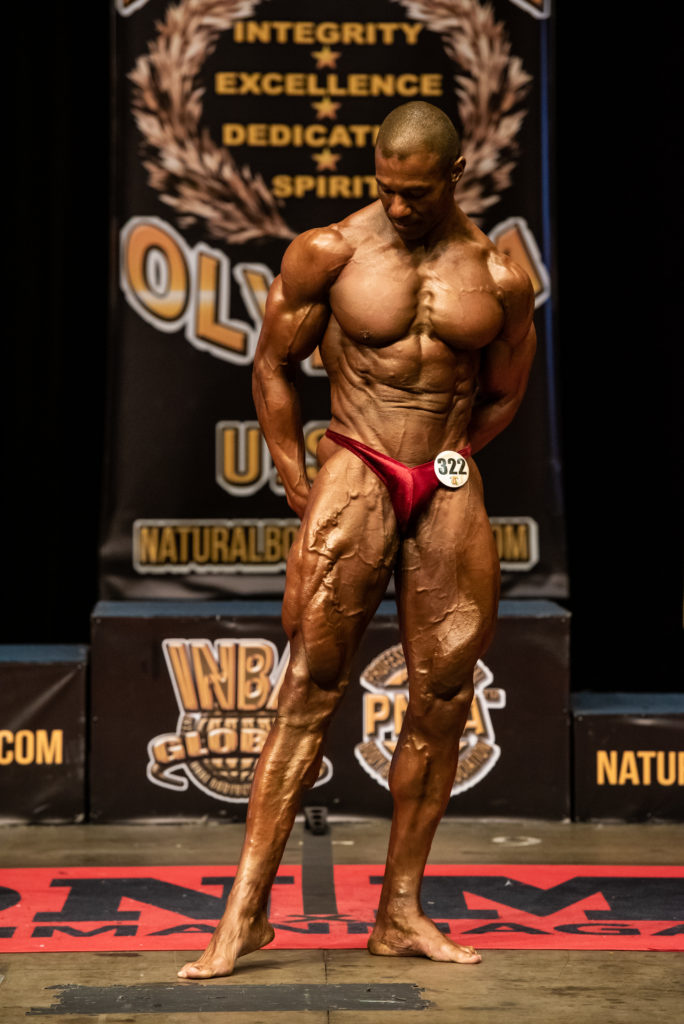
What Does it take to be a Great Poser?
Throughout my bodybuilding career, I have been blessed with the opportunities to be a guest performer all around the world on many occasions. It all began with my initial passion for the sport of bodybuilding at the age of 21. I became a student of the game and studied how the best performers flexed and transitioned between each pose, what types of music they chose, and how much practice they would put into perfecting their routines. Eventually, I learned how to hit poses that best displayed my body type. The more I competed, the more confident I became and my stage presence improved. I was humbled in victory and defeat, and I was on a constant quest for self-improvement.
The turning point in my bodybuilding career is when a friend of mine saw his first bodybuilding competition with me and commented on the lack of originality in the bodybuilding competitors posing routines. He said it made the show boring after the first dozen competitors finished their routines. We discussed ideas on how to make a posing routine that was theatrical and would keep the audience’s attention. We created a routine that I was able to perform as a guest on the military base I was stationed at in California, and it received a standing ovation. We were asked to perform on multiple occasions on military bases and local shows. I continued to do that guest posing routine for years, and it’s proof of the opportunities that can arise when you put in the effort to make bodybuilding posing an entertaining art form instead of an afterthought.
Conclusion
I hope this article will help to bring your posing and stage presence to the next level. The benefits of perfecting the art of posing are too important to ignore. Being a true professional that takes pride in your physique means your presentation has to be prioritized with your training and diet. Then you can be confident that you are presenting your optimal physique to the judges and the fans at every show you compete in!
Last posing tips: always smile, pose gracefully, be confident, and enjoy the process.
Philip M Ricardo Jr “The Legend”
Retired Marine Corps Master Sergeant
2021 Multi-Media Contracted Athlete With Iron Man Magazine, Generation Iron, INBA PNBA
INBA/PNBA Promoter (Pro/Am Philip Ricardo International Legends Classic)
2015 INBA/PNBA Hall of Fame Inductee
2021 Natural Olympia Professional Grand-Masters Men’s Bodybuilding Champion
2020 Featured Athlete “Natty4Life” Generation Iron Fitness Network
2007, 2008, 2015, 2019 Natural Olympia Professional Men’s Bodybuilding Champion
2019 Natural Olympia Professional Masters Men’s Bodybuilding Champion
2017 PNBA Men’s Bodybuilding World Champion: Rimini, Italy
2016 PNBA Men’s Bodybuilding World Champion: Budapest, Hungary
2003, 2007, 2013 PNBA Men’s Bodybuilding Natural Universe Champion
2007, 2008, 2010 PNBA Men’s Bodybuilding Team USA Champion






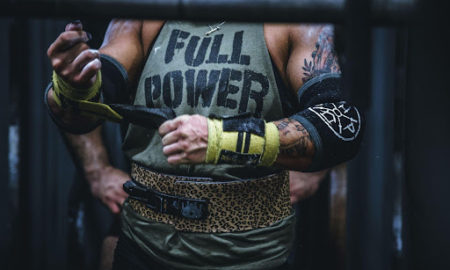
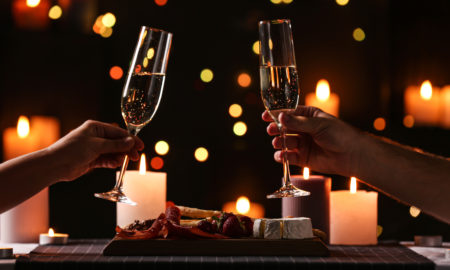
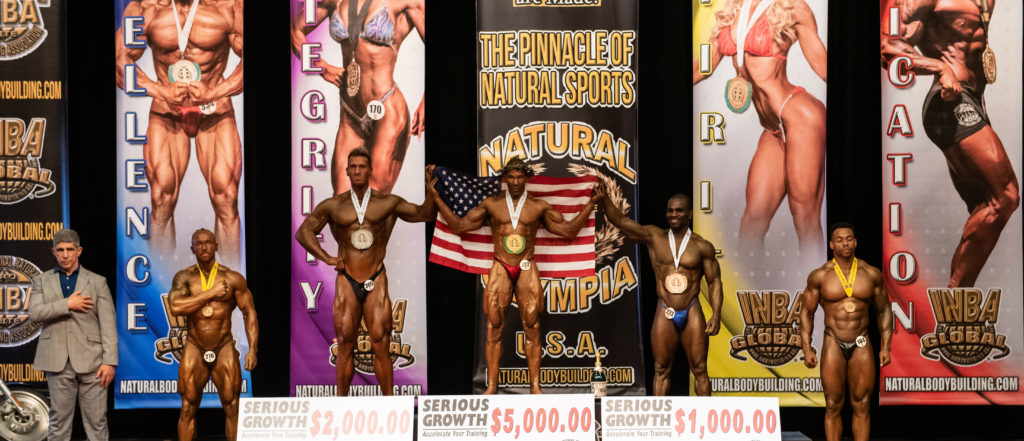






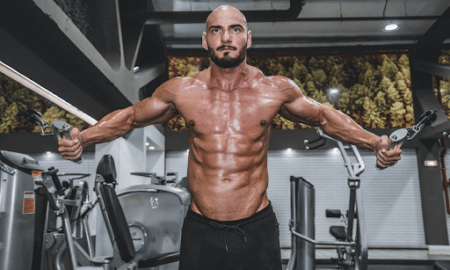


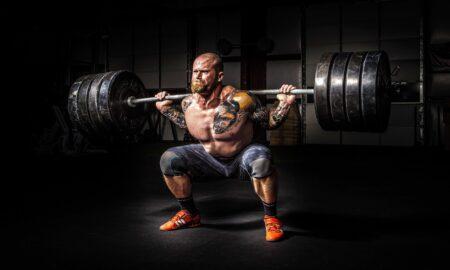
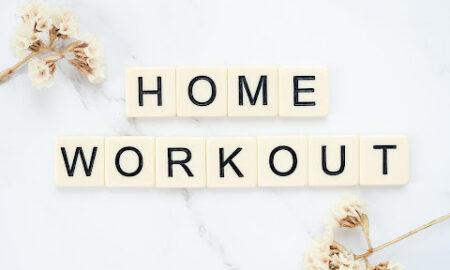



You must be logged in to post a comment Login